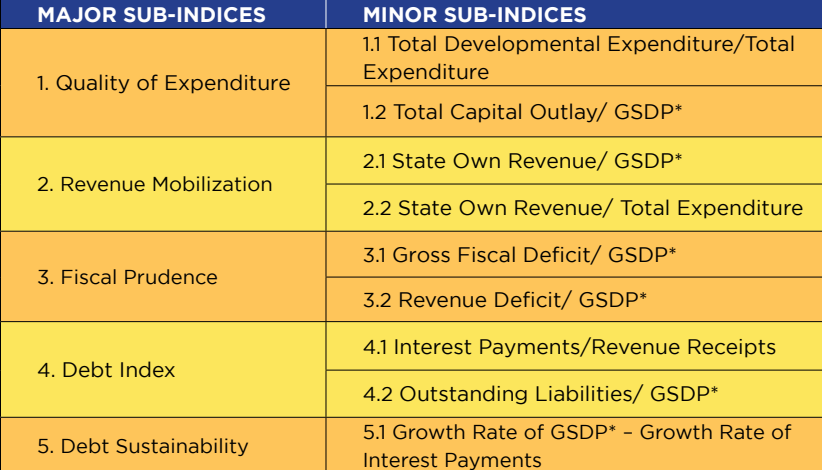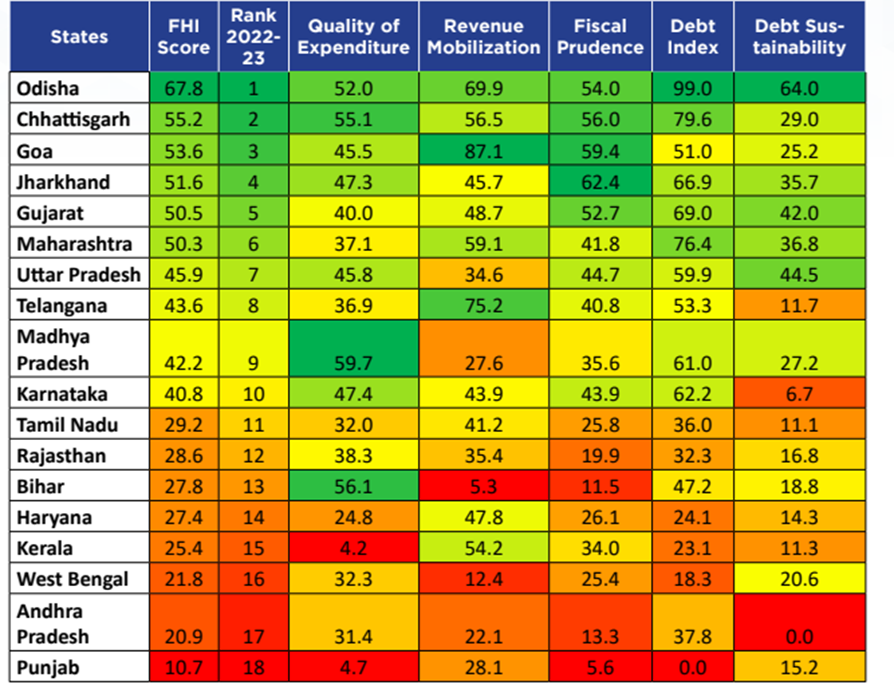- Courses
- GS Full Course 1 Year
- GS Full Course 2 Year
- GS Full Course 3 Year
- GS Full Course Till Selection
- Answer Alpha: Mains 2025 Mentorship
- MEP (Mains Enrichment Programme) Data, Facts
- Essay Target – 150+ Marks
- Online Program
- GS Recorded Course
- Polity
- Geography
- Economy
- Ancient, Medieval and Art & Culture AMAC
- Modern India, Post Independence & World History
- Environment
- Governance
- Science & Technology
- International Relations and Internal Security
- Disaster Management
- Ethics
- NCERT Current Affairs
- Indian Society and Social Issue
- NCERT- Science and Technology
- NCERT - Geography
- NCERT - Ancient History
- NCERT- World History
- NCERT Modern History
- CSAT
- 5 LAYERED ARJUNA Mentorship
- Public Administration Optional
- ABOUT US
- OUR TOPPERS
- TEST SERIES
- FREE STUDY MATERIAL
- VIDEOS
- CONTACT US
NITI Aayog launches the “Fiscal Health Index 2025”
NITI Aayog launches the “Fiscal Health Index 2025”
27-01-2025

- The Fiscal Health Index (FHI) 2025, launched by NITI Aayog on January 24, 2025, to assess the fiscal status of 18 major states in India for the financial year 2022-23.
- The report is meant to provide data-driven insights to guide state-level policymakers in improving fiscal governance, promoting economic resilience, and ensuring national stability.
- The FHI 2025 will be published annually and aims to highlight the fiscal status of states based on key financial parameters.
- The report uses data from the Comptroller and Auditor General of India (CAG) for the fiscal year 2022-23, supplemented by trends from 2014-15 to 2021-22.
- FHI covers states contributing significantly to India’s GDP, demographics, public expenditure, and revenues.
- The states are categorized into four groups: Achievers, Front-Runners, Performers, and Aspirational based on their fiscal health.
State Categories & Key Performance Indicators

|
Category |
States |
Key Characteristics |
|
Achievers |
Odisha, Chhattisgarh, Goa, Jharkhand |
High capital outlay, low fiscal deficit, sustainable debt, revenue surplus. |
|
Front-Runners |
Maharashtra, Uttar Pradesh, Telangana, MP, Karnataka |
Balanced fiscal management, consistent tax growth, improved debt sustainability. |
|
Performers |
Tamil Nadu, Bihar, Rajasthan, Haryana |
Moderate fiscal health; some need improvement in revenue and debt management. |
|
Aspirational |
Punjab, Andhra Pradesh, West Bengal, Kerala |
High fiscal deficits, low revenue generation, rising debt burden. |
Components of the Fiscal Health Index:
The FHI evaluates the fiscal health of states on the basis of 5 major sub-indices:

Final Ranking of states for 2022-23

Long-Term Vision and Impact:
- The FHI aligns with India’s long-term vision of becoming a Viksit Bharat @2047
- It encourages states to adopt good fiscal policies and improve resource management, contributing to long-term economic stability.
- The ranking system motivates states to benchmark their fiscal practices, promoting healthy competition and driving improvements.
- The FHI will be published annually, providing continuous updates and insights for policymakers to track progress and implement necessary reforms.
Key Term: 5 major sub-indices
|
|
Also Read |
|
FREE NIOS Books |
UPSC Daily Current Affairs |
UPSC Monthly Mgazine |
Previous Year Interview Questions |
Free MCQs for UPSC Prelims |
UPSC Test Series |
ENSURE IAS NOTES |
Our Booklist |




